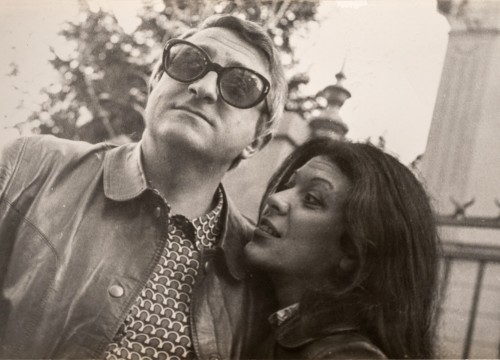The Castle of Portofino reopens with a personal Exhibition by Elio Marchegiani
Fossil finds from over one hundred and fifty million years ago on display, inserted and framed in the artworks, almost relics in which we can look at ourselves
"Art is an exact science that has had the luck of not being one"
One is young or old depending on the mind, the desire to investigate the world beyond those formalities or conveniences that determine our lives. Art helps in this as long as the person handling it is capable of overcoming certain easy stereotypes and who has perhaps discovered that “art is an exact science that has had the good fortune of not being one”.
So says a very young Elio Marchegiani who, at the fresh age of ninety-two, continues to experiment with that truth that few people love because it undermines the ephemeral certainties or the questionable ambitions of everyone. “Quando l’uomo sapiens ancora non prendeva granchi” is the title of his exhibition, curated by Daniele Crippa, now at the Castle of Portofino.
But why did he choose Portofino?
I wanted this cycle on human fossilization to be exhibited in a place where the attention to the sea is demonstrated by the clearness of its waters.” A warning mixed with sadness for all that is being wasted in nature, something that the fossil found in the exhibition, inserted and framed sometimes as relics in which we can look at ourselves make dramatically emerge. They are what we will inevitably become, also because of that “human fossilization” that is undermining our times where the so-called progress is punishing itself. We are now masters of the Earth as the extinct dinosaurs were more than sixty million years ago.
The title wants us to understand that the homo sapiens has been able to perform those damages of which everyone talks about but few people think of avoiding. Marchegiani has always been interested in this delicate topic using the critical irony that belongs to him: in 1969 he wanted to emphasize the seriousness of a sneeze inside of the helmet worn by Schweickart, ready to be launched with the LEM from Cape Kennedy to conquer the Moon, which was followed by the suspension of the space mission and the consequent hospitalization of the astronaut.
If this “trivial” inconvenience was enough to stop the Apollo mission, how many “sneezes” damage our world on a daily basis? Elio responded promptly to this question by exhibiting that same year in the prestigious Apollinaire Gallery in Milan, directed by Guido Le Noci, 9000 live flies launching in this way not only a boulder to the artistic world of that time but a warning to those who should protect our well-being but fail to do so.
In the exhibition there is also an artwork from 2005 that represents a child equipped with a gas mask, almost a precursor of the “viral” climate that currently oppresses us in every way. And what does our artist do in return? “I go around with a ‘muzzle’ and not a mask to look for a ‘T’ to transform Virus into VirTus!” Is it therefore appropriate to put into practice a certain kind of art to try to save the world? The answer is in the caustic smile and in the ostentatious “fossils” of Elio Marchegiani
Elio Marchegiani
Quando l’uomo sapiens non prendeva ancora granchi
Castello di Portofino
Curated by Daniele Crippa
26/06 - 31/07





































